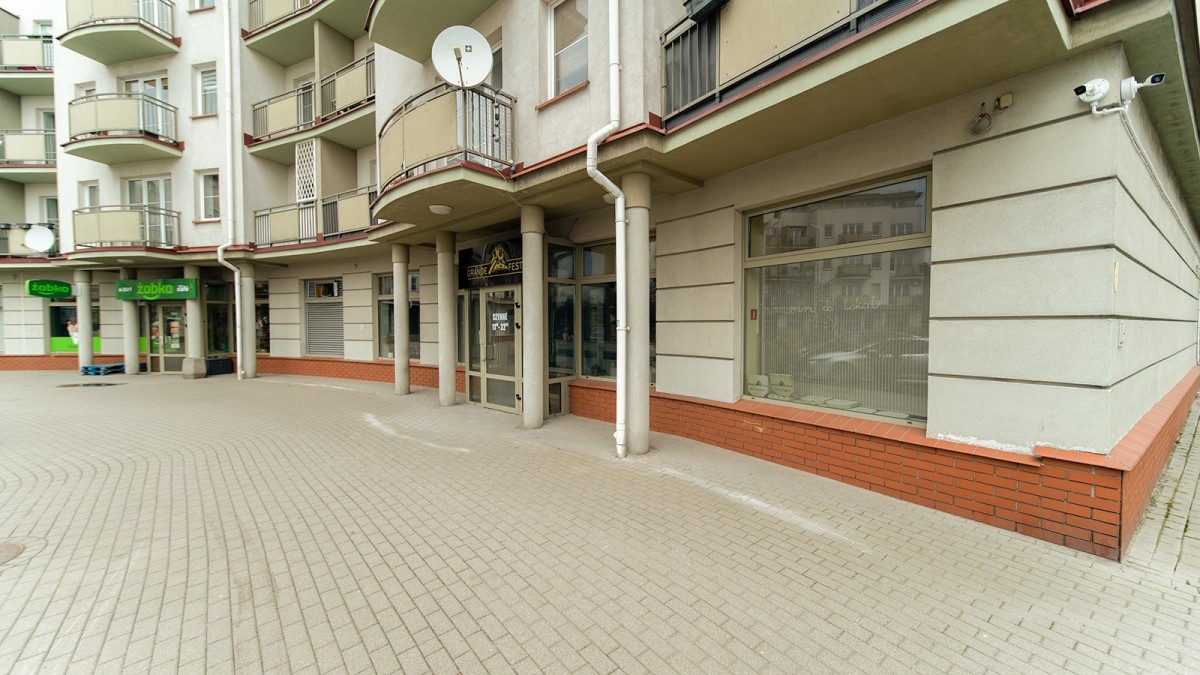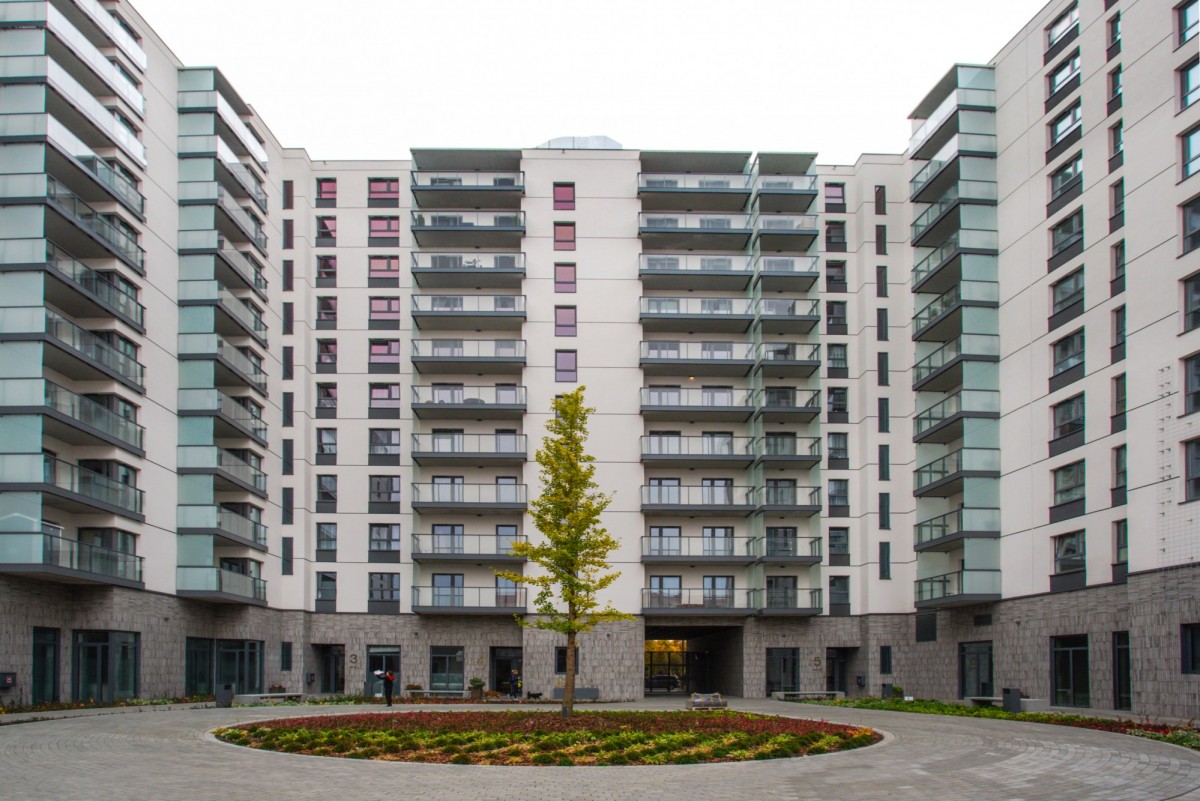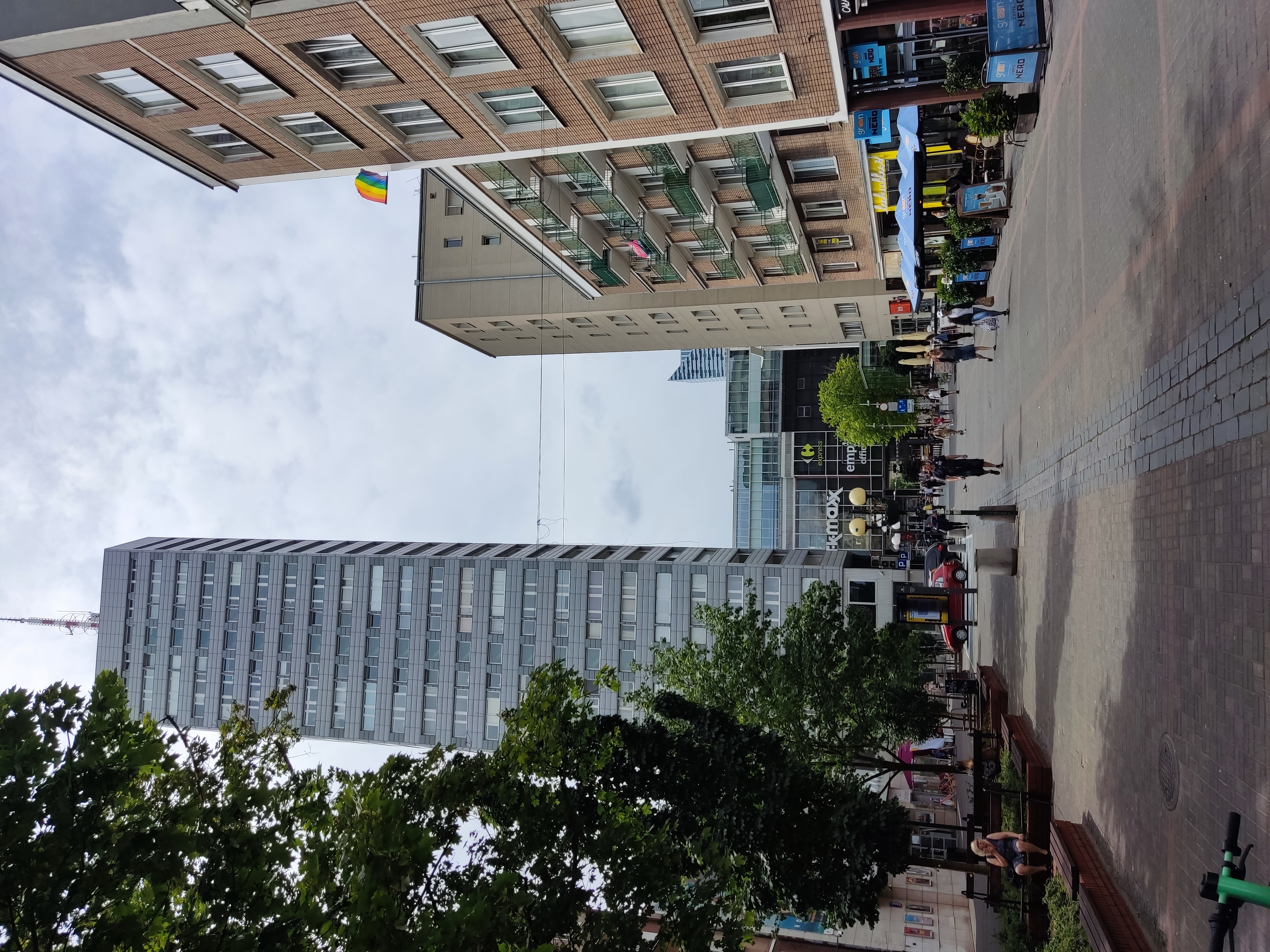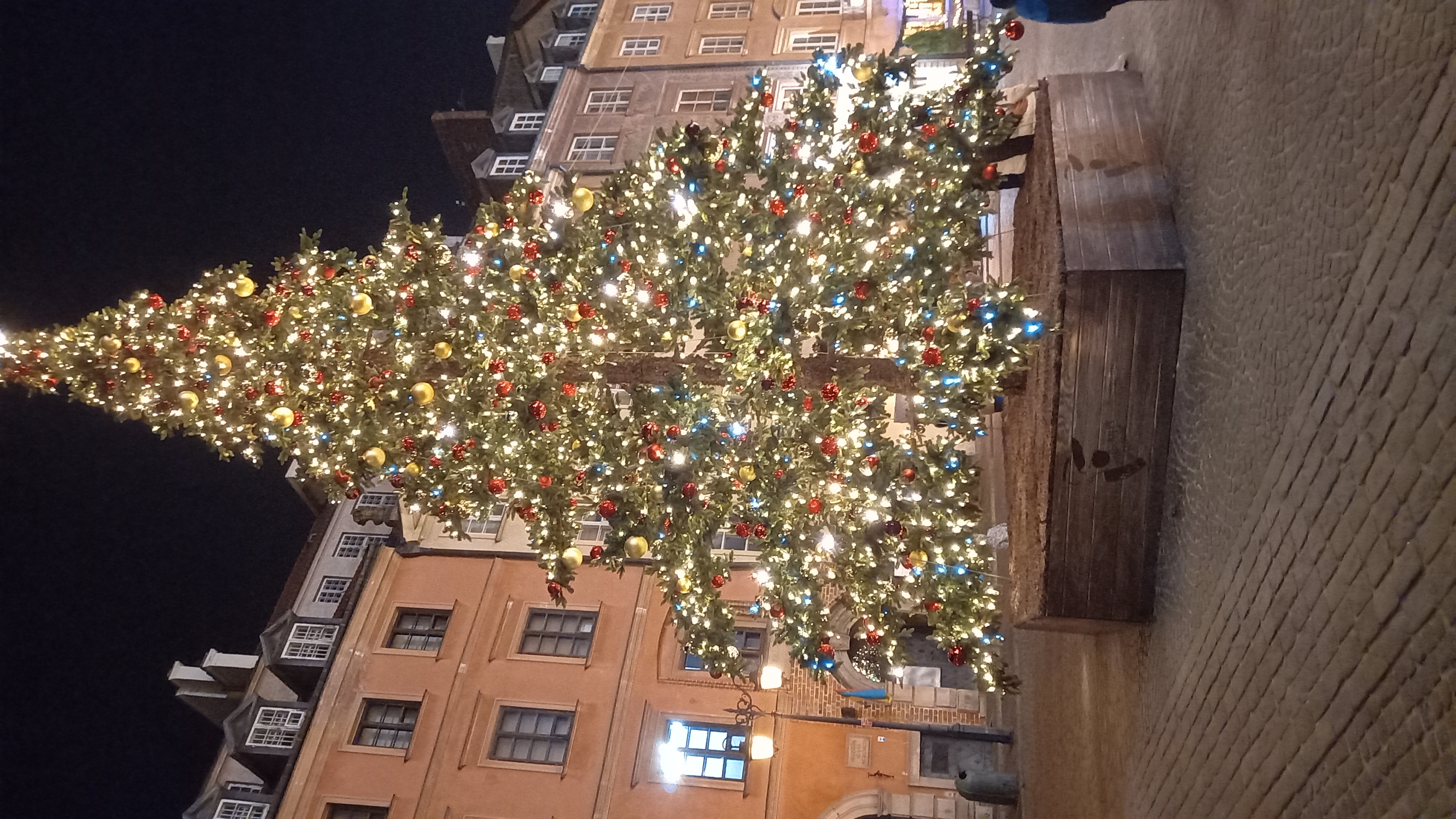Marki

General information about the city of Marki:
Marki is a city in Poland, part of the Masovian Voivodeship, Wołomin County. It has the status of a city commune. It is part of the Warsaw agglomeration, located northeast of Warsaw, along Marshal Jozef Pilsudski Avenue (former voivodship road No. 629, formerly national road No. 8). The city of Marki is located about 10 km from the center of Warsaw, on the national route Warsaw - Bialystok. Efficient connections to Warsaw are provided both by the Warsaw-Białystok national route and by the Home Army Alley, which connects Marki with Wola, Ochota and Mokotów.
The rivers Dluga (Markovsky Canal) and the rivers Charna flow through the Marki, flowing into the Zheransky Canal. Until 1954, the rural community of Marki was located here.
The city covers an area of 26.03 km². Population 29,032 (2013). Population density 1115 people/km² Telephone code +48 22. Postal code 05-270. Automotive code WWL.
Distances from the city of Marki to districts of Warsaw
Praga 7.2 km, Warszawa Wschodnia 9.6 km, Warszawa Gdańska 10.1 km, Warszawa Główna 13 km, Warszawa Dworzec Zachodni 13.7 km, Ursus 20.9 km, Dąbrowka Wąska 24.8 km, Dąbrowa 24.8 km, Grzegorzewo 2 8.1 km
History of the city of Marki:
The city of Marki is located near the capital, located on the way from Warsaw to Bialystok. A few decades ago it was one of the most modern industrial centers of the textile industry. The beginning of today's city dates back to the end of the 16th century, when, most likely around 1580, a village was founded on land that belonged to the Warsaw headman.
background
Archaeological research shows that the settlement on the territory of the present Mark dates back to prehistoric times. Excavations have led to found on the street. Galler flint tools dating back to the 5th millennium BC. (The Komornice culture is the earliest known culture in Poland, developing during the Mesolithic period). From later periods, fragments of pottery of the Bronze Age, the remains of a settlement of the 1st and 2nd centuries AD were found. and an oak-trunk well dating from the 10th century.
royal village
At the end of the 16th century, 2 plots of land (about 34 hectares) were transferred from the royal estate to the Markov (Markovich) family, from which the name of the village originated. Soon, Jan and Wojciech Markovic also received the royal privilege of owning a mill on the Dluga River, and the inhabitants were mainly engaged in agriculture.
The wars of the following centuries (including the Swedish Flood, the Third Northern War) repeatedly led to destruction in Marka and its environs, as well as to the death of many inhabitants of that time.
Calendar of events for this period:
1565 - the oldest mention of the Dluga River and the mills built on it.
1601 - the oldest written information about the village of Marki in a document signed by Sigismund III Vasa.
1650 – Marek has about 40 inhabitants.
1656 - the destruction of Marek during the three-day battle for Warsaw.
1765 is the oldest description of an inn in Marks.
1794 - participation of the Markovites in the Kosciuszko uprising.
In the 19th century (initially under the Prussian partition and as part of the Duchy of Warsaw, and after 1815 under the Russian partition) the process of gradual transformation of Marek into an industrial settlement began. In 1833-1835, the road leading through the Marks was widened and paved, and the inhabitants began to engage in crafts (shoemaking, weaving). Due to the presence of clay resources, the production of bricks has also acquired great importance. However, a more intensive development of brands became possible only after 1850, when companies from Poland gained access to the Russian market.
Using cheap local labor, Warsaw entrepreneurs began to supply the peasants with raw materials and tools. In a short time, the inhabitants of Marek became famous as good professionals. However, only in the last twenty years of the 19th century Marks began to develop rapidly, large-scale industry appeared in the city.
Calendar of events for this period:
1821 - Leon Drevnitsky founded a farm, later named Drevnitsa after him.
1827 - 414 inhabitants in 70 houses lived in the village.
1834 - laying of the route Warsaw - Radzymin, passing through Marki.
1852 - construction of a thanksgiving monument for saving Marek, Pustelnik and surrounding villages from a cholera epidemic.
1883 - the beginning of the construction of a spinning factory by English industrialists, the Briggs and Posselt company.
1883 – electric lighting was used for the first time in Mazovia.
May 1, 1894 - First strikes at Briggs' factory.
March 1897 - the first run of the Marecki railway from Targuvek to Marki.
January 22, 1899 - Joint Stock Company Zakłady Ceramiczne "Pustelnik" Pustelniku, Milośnie and Zombki was founded, with plants located in Pustelnik, Milosni and Zombki.
In 1883, the land, previously owned by a joint-stock company called Folwark i cegielnia wójtostwa Marki, was bought by English entrepreneurs from the industrial city of Bradford - the brothers Edward, Alfred and John Briggs. In 1884, Briggs, Posselt & Company launched one of the largest and most modern woolen spinning mills in Central and Eastern Europe at that time in Marki, producing mainly for the Russian market.
Thus, it was possible to eliminate the customs barrier established by Russia and, thereby, protect itself from foreign competition.
Above the entire building of the spinning factory, which has survived to this day, there was an almost 50-meter pipe, as well as apartment buildings in which the workers lived. The Briggs brothers also built a working housing estate and a primary school building in Marky - currently the Marecki Cultural Center is located here. At the factory in Marki, for the first time in the Kingdom of Poland, the production of worsted woolen yarn was launched, the raw materials for which were imported from Australia, Argentina and southern Russia. The materials needed for production were delivered to the factories by the railway, opened in 1897 and connecting Warsaw with Drewnitsa, Zonbki, Marky and Pustelnik, where numerous brick factories operated.
The Kingdom of Poland has become a very attractive place for the activities of European agricultural enterprises. The location provided convenient conditions for the transportation of industrial goods and contributed to the further development of the village. At the end of the 19th century, Marks had about 10,000 inhabitants and was one of the most powerful industrial centers of the Kingdom.
The First World War slowed down economic development and devastated the machine park. In 1916-1918 the Marks were under German occupation. The plant was rebuilt, but cut off from the absorbing eastern market, production was limited.
Marki, along with Radzymin, Ossow and other cities near Warsaw, played an important role in the Battle of Warsaw during the Polish-Russian War. Although there was no fighting in the Marches themselves, the centers of decision-making were located here.
Stamps in the Second Polish Republic:
1922 - Creation of the Workers' Sports Club "Markovia".
1923 - Establishment of the Volunteer Fire Department in Marky.
July 1, 1924 - the rural commune of Marki was created with the seat of the commune administration in Marki.
September 1926 - the first classes at the new school named "Victory Monument 1920".
1929 - Establishment of the Marecki Commune Health Center.
May 25, 1930 - visit of the President of the Republic of Poland Ignacy Mościcki to Marki.
September 8, 1939 - the first German bombs fell on the Marks.
September 21, 1939 - 178 members of the diplomatic corps and 1,200 people from a foreign colony are evacuated from Warsaw.
March 26, 1942 - the liquidation of the ghetto created in 1940 for the Jewish population and the deportation of its inhabitants to the Warsaw ghetto.
October 16, 1942 - hanging by the Nazis in Marki 10 Poles; execution of 50 Pawiak prisoners.
October 18, 1943 - a detachment of the People's Guard stationed in Ząbki raided a weapons and ammunition depot located on the site of the former Briggs factory.
July 26, 1944 - Home Army Inspectorate Radzymin joins Operation Burza.
July 30-31, 1944 - Axis company of the II Home Army of the "Cielkow"-Marki region, supported by two Soviet tanks of the 3rd Army, blocked the crossing of the Warsaw-Bialystok highway.
July 30, 1944 - the execution by the Germans near the lake "Kruchek" of the inhabitants of the villages of Marek, Struga, Pustelnik and Zelonka.
July 31, 1944 - a patrol of the 738th platoon of the Home Army near the church in Struga opened machine-gun fire on the crews of two German tanks. During this time, the Soviet tank destroyed both tanks.
September 13/14, 1944 - The Red Army entered Marki. Soviet troops were stationed in Marki until January 12, 1945, when the Vistula-Oder operation of the Red Army began.
During World War II, there was a Jewish ghetto in Marky, which was liquidated in mid-1942, when the Jewish population was transferred to the Warsaw ghetto. In 1942-1943, a forced labor camp (Arbeitslager) for 1,200 people was located in Pustelnik.
Unfortunately, World War II completely destroyed the factory in Marky. Only the chimney and shells of the turbine boiler house survived, which today is a valuable object of industrial architecture.
Stamps in the Polish People's Republic:
1946 - Marki commune consists of 7 communities with a total area of 4800 hectares, population 21125 people.
as of July 1, 1954 - the Warsaw poviat was abolished, and the communes of Marki and Pustelnik became part of the Volominsky poviat.
On January 1, 1967, in accordance with the Decree of the Prime Minister of December 9, 1966 on the establishment of separate cities, Marks received city rights.
September 1967 - the first lessons in the new building of elementary school No. 1 on the street. Okolna
August 31, 1974 - the last run of the Maretskaya railway.
1975 - Marki are located in the Warsaw Voivodeship.
March 14, 1984 - opening of the Marki cultural center.
Modern Marki
The years after the end of the war marked a new stage in the development of the city of Marki, which gradually began to turn from a small suburban factory village into an industrial center, concentrating a number of factories on its territory. To this day, there are several dozens of craft workshops in Marki, representing various industries: shoe, metalwork, construction, carpentry and sewing.
Calendar of events of the modern period:
1999 - The stamps are located in the Masovian Voivodeship, in the Wołomina region.
2000 - creation of the Maretsky branch of the Poviat Chamber of Commerce - currently the Maretsky Economic Association (MSG).
December 2003 - Przyyatsöl Marek Partnership is founded.
December 22, 2017 - opening of the Marek bypass road.
Marki is a city with a well-developed infrastructure. These are electricity, gas, a telephone network and sanitary and water networks currently under construction. A newly built water treatment plant is able to provide quality water to a city twice its size.
In the area of the city of Marki, there are many attractive areas intended for industrial and service development. The location on the Warsaw-Bialystok highway and the network of access roads to it create unlimited investment opportunities.
There are about 2,000 business entities in the city, including various workshops and a developed trade and service network.
Another advantage of the city is a wide educational offer. Marki has both public schools and kindergartens (5 primary schools, 2 junior high schools, 3 high schools, 2 special school complexes and 3 kindergartens) and non-public schools (primary school, junior high school, high school, kindergartens ).
The largest enterprises in Marki:
Tchibo Coffee Roaster
SunChemical
Shopping center M1 Marki
Komandor Warszawa S.A.KOMANDOR
Toyota Authorized Service Center
Tchibo Coffee Roaster is one of the largest coffee concerns in the world, whose coffee can be bought in 28 countries around the world. Tchibo has been operating in Poland since 1992 and has been a market leader for several years now.
In 1994, Tchibo launched its own coffee roasting factory in Marki. Currently, it is one of the most modern roasters in Europe - all production processes are fully automated and controlled by computer control systems. The plant produces about 20,000 tons of coffee per year. The coffee roasting plant in Marki is fully managed by Polish specialists and currently ranks first in the ranking of the most profitable Tchibo plants.
SunChemical
A branch of the world's largest concern for the production of printing inks for the printing and packaging industry, SunChemical, began its operations in Poland in October 1994. In Poland, the branch distributes printing inks, auxiliaries and UV varnishes. The central printing warehouse offers a full range of printing inks: offset: sheet, roll - heat-set and cold, flexo and stencil, rotogravure, as well as printing varnishes, additives and auxiliary materials for inks.
Shopping center M1 Marki
M1 Marki shopping center is a modern shopping center where you can find both international brands and local tenants. More than 60 specialized stores are located on 42,000 m2, offering a full range of goods and services that will satisfy the most demanding customer.
In the immediate vicinity of the Centrum M1 are located the furniture house IKEA, the Praktiker DIY store and the Decathlon sports store.
In front of the shopping center there is free parking for more than 2300 parking spaces. Customers can also use the guarded car park.
Komandor Warszawa S.A.KOMANDOR
Komandor Warszawa S.A.KOMANDOR is an international concern, which includes many companies that manufacture and supply interior design products based on the original sliding door system.
Commander Warsaw S.A. started working in 1995. The plant distributes Komandor sliding door systems. In 2001, the company bought a piece of land in Marky near Warsaw. After reconstruction and partial expansion of the building in August 2001, production was launched. Currently, the plant occupies a production and storage area of 4000 m2 and an office area of 650 m2.
Toyota Authorized Service Center
Range of activities: Sale of new and used cars; Warranty and post-warranty repair; Vialle gas installations with direct fuel injection; Shop of original spare parts; Insurance, leasing loans; Elimination of post-accident damage; Body painting.
Cultural institutions:
Marecki Cultural Center (Marecki Ośrodek Kultury)
Marecki Cultural Center was founded in March 1984. His residence is a historical one-story building, which is more than 100 years old, with a beautiful turret, located in the city center on the street. Factory 2, corner of st. Pilsudski.
The main task is to popularize cultural activities among the inhabitants of Marka, to create conditions for the harmonious development of children, youth and adults through continuous cultural education.
The main program proposals of the Marecki Cultural Center:
Music Center; Group of modern dance "Atut"; Children's and Youth Vocal and Dance Ensemble "Marechki"; Arts Center; Gallery of the Marets Center;
Club for the elderly; Kids club; Club of intellectual games Grotek; Educational activities; Citywide and district events
Public Library of the City of Marki (Biblioteka Publiczna Miasta Marki)
The beginning of the Public Library of the city of Marki dates back to 1947. At present, the library's book fund (including a loan for adults, a children's department, a reading room, a branch in Pustelnik and a branch in Struga) has about 54,000 books. The library has a rich, constantly updated collection of fiction and popular science literature for children, adolescents and adults.
A novelty in the library's offer is the so-called "conversational book" (a book recorded on cassettes) and a small collection of books in English.
The library also has an Internet laboratory - four computer workstations with Internet access (ADSL). Readers also have a scanner and a color printer at their disposal.
Medical institutions:
Clinic Kardiomed (Przychodnia Kardiomed)
The polyclinic provides basic medical services free of charge: consultations of family doctors; consultations of pediatricians; visits from nurses and family midwives; home visits.
Specialist doctors: ophthalmologist, diabetologist, laryngologist, gynecologist, orthopedist, neurologist, rheumatologist, endocrinologist, surgeon, dermatologist, cardiologist
The clinic has an ultrasound laboratory, which performs ultrasound examinations of the abdominal cavity, thyroid gland, mammary glands, gynecology, orthopedics, echocardiography, urology and ultrasound-guided biopsy.
Eskulap Clinic (Przychodnia Eskulap)
Eskulap Clinic, under contract with the National Health Fund, offers a free consultation from a family doctor, internist, pediatrician, gynecologist, dentist, nurse and family midwife from Monday to Friday. On Saturdays, a therapist, pediatrician, and dentist are on duty.
Specialist doctors: ophthalmologist (adult and child), orthopedist (adult and child), neurologist (adult and child), laryngologist (adult and child), allergist (adult and child), gynecologist, endocrinologist, endocrinologist-gynecologist, surgeon (adult and children). children), cardiologist, psychiatrist, urologist, dermatologist, psychologist, office of occupational medicine.
Educational institutions:
Schools
Primary School No. 1 (Szkoła Podstawowa Nr 1) for 426 students.
Primary School No. 2 (Szkoła Podstawowa Nr 2 im. Żołnierzy AK II Rejonu Celków) for 426 students.
Primary School No. 3 (Szkoła Podstawowa Nr 3 im. Pomnik Zwycięstwa 1920) for 329 students.
Primary School No. 4 (Szkoła Podstawowa Nr 4) for 291 students.
School Complex No. 2 (Zespół Szkół Nr 2).
School complex No. 2 consists of elementary school No. 5 (Szkoła Podstawowa Nr 5), secondary school No. 2 (Gimnazjum Nr 2). In the upper secondary school, the number of students: 323. In the primary school, the number of students: 231.
Secondary School No. 1 (Zespół Szkół Nr 1) for 456 students. The school includes: Gymnasium No. 1 (Gimnazjum Nr 1), Secondary School (Liceum Ogólnokształcące), Profile Lyceum (Liceum Profilowane), Economic Lyceum (Liceum Ekonomiczne), Technical Lyceum (Liceum Techniczne).
Private primary school (Prywatna Szkoła Podstawowa Nr 1 “…AD ASTRA”).
Private gymnasium No. 1 (Prywatne Gimnazjum Nr 1 “,,, AD ASTRA”).
Preschool institutions:
Municipal Kindergarten No. 1 (Przedszkole Miejskie Nr 1).
Municipal Kindergarten No. 2 (Przedszkole Miejskie Nr 2).
Municipal Kindergarten No. 3 (Przedszkole Miejskie Nr 3).
Private kindergarten No. 1 "Teletubis" (Przedszkole Niepubliczne Nr 1 "Teletubiś").
Private kindergarten No. 3 "Children's Paradise" (Przedszkole Niepubliczne Nr 3 "Dziecięcy Raj").
Private kindergarten "Smurfs" (Przedszkole Niepubliczne "Smerfy").
Nature in the city of Marki:
Nature
The surroundings of the city are characterized by a significant degree of forest cover. Forests cover an area of 936 hectares. Forests and wooded areas are found mainly in the eastern part of the city. The largest tree in the Marches is the natural monument Gaios Oak with a circumference of 636 cm and a height of about 30 meters.
The highest natural point in Marky is a hill in the forest near the provincial road no. which is the geodetic center of the Masovian Voivodeship.
On the border with Zelenka is the Black Lake Kruchek. The rivers Charna and Dluga flow through the city. Both of these rivers flow in a westerly direction and flow into the Zheran Canal.
The city has a 19th century park with many natural monuments.
Horove Bagno Nature Reserve
The Horowe Bagno nature reserve is one of the city's valuable natural sites. It is located in a forest complex abounding in dunes, swamps and peat bogs. It is a reserve of faunal type with a high value of vegetation, with landscape and aesthetic values. Its area is about 44 hectares, of which 17.5 hectares are water. There is one large pond with an area of 7 hectares and a number of small reservoirs, which were formed as a result of peat extraction.
Type of reserve: peat bog. Plant species under strict protection: sand carnation (Dianthus arenarius), round-leaved sundew (Drosera rotundifolia), egg-shaped listera (Listera ovata), white poplar (Platanthera bifolia), white water lily (Nymphaea alba).
Bicycle routes
Bicycle paths are an attractive tourist offer for residents of the city, residents of Warsaw and tourists visiting Marki. They allow active and safe rest. We create trails taking into account the educational needs of children and youth. Trails allow you to get acquainted with the cultural and natural heritage.
The recreational trail marked in blue is about 24.5 km long. It starts at the town hall of Marka and continues through the forest towards Cherna Struga, through the Drevnitsky forests, Chernaya Struga Urochisko to Zamostki Vulchanskie, Slupetska Forest, Lengi Charna Struga. The end of the trail is at Marka City Hall.
The second trail, marked in green, is natural. Its length is about 20.5 kilometers. The Green Trail also starts at the Marka City Hall and runs along the Dluga River, through the Colonia Nova Zelonka, Dvernitsky Forests, Urochisko Gorova Gura, Senkovin, Yavorovka, Cherna Struga, in the area of ul. Grunwaldziej and next to "zwalki". The green trail also ends at Marka City Hall.
The cycling "Path of National Memory in Marky", marked in black, passes in the vicinity of the lake "Kruchek". Its length is about 10 kilometers.
Blog

Mokotow. Microdistrict (obszar) “Sadyba” (Sadyba)
Mokotow. Microdistrict (obszar) “Sadyba” (Sadyba)

Housing construction by districts of Warsaw
Housing construction by districts of Warsaw






